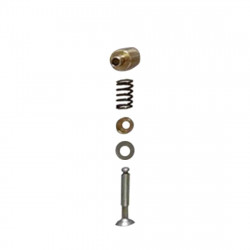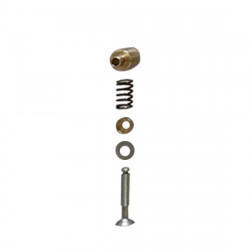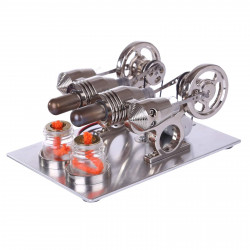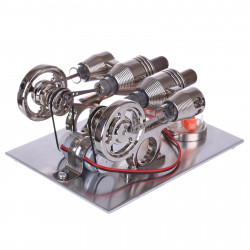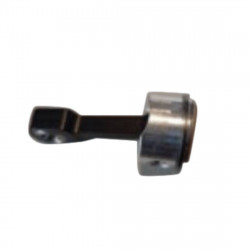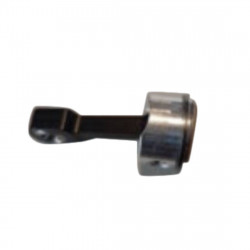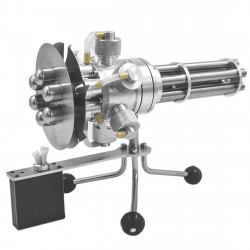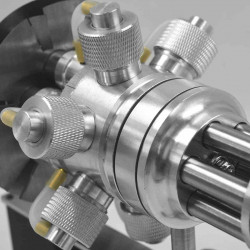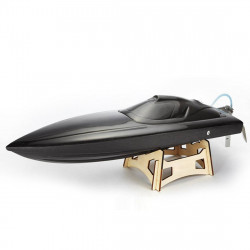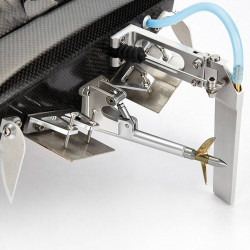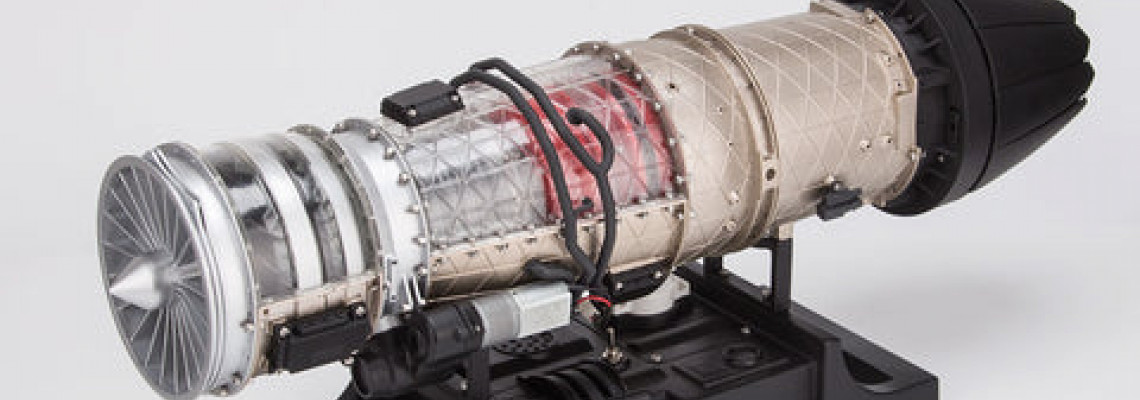
TECHING F135 Fighter Turbofan Engine Kit Small-content-ratio Twin-rotor Axial-flow Pressurized Turbofan Engine Model
Prototype engine application background:
Integrated into the US F-35 stealth fighter, the F135 turbofan engine
The US Pratt & Whitney Company created the F135 after-burning turbofan engine, producing up to 18 tons (40,000 pounds) of thrust. The core engine and basic construction of the F-22’s F119 engine were the basis for developing the F135 engine. The F135 can also be fitted with a rotating nozzle that bends downward and has three bearings, as the F-35B that the Marine Corps and the British Royal Navy are anticipated to use has to be able to take off and land vertically. This nozzle can significantly reduce the take-off/landing distance but is only utilized in vertical take-off and landing scenarios. Other F-35s do not use this design.
The F135 turbofan engine comes in three different models:
The F-35A Air Force conventional take-off and landing (CTOL) fighter is equipped with the F135-PW-100 engine.
The F-35C Navy carrier-based fighter (CV) is equipped with the F135-PW-400 engine.
The F-35B Marine Corps short take-off/vertical landing fighter (STOVL) has the F135-PW-600 engine.
Components of the F135 turbofan engine:
An annular combustion chamber, a single-stage high-pressure turbine, a two-stage low-pressure turbine, an afterburner, a two-dimensional vector nozzle, a six-stage compressor, a three-stage fan, and so on.
Structural features of this model (structural layout from front to back):
6th stage high pressure compressor, 1st stage high pressure turbine, 2nd stage low pressure turbine, 1st stage fan, and 2nd stage low pressure compressor. It uses a central double shaft structure, a floating wall flame tube annular combustion chamber, and high and low-pressure turbines that revolve in opposing directions.
The F135 turbofan engine is a derivative of the F119 turbofan engine, both of which are axial-flow engines.
With an adequate 6-stage high-pressure compressor, a 1-stage high-pressure turbine, and an efficient fan (powered by a 2-stage low-pressure turbine), the F135 utilizes the F119’s main engine. The Full Authority Digital Engine Control System (FADEC) from BAE Systems powers the F135 aircraft. The F135 incorporates many field-replaceable components (LRC) to increase the engine’s dependability and maintainability, and it has roughly 40% fewer parts than the F119.
The F119 engine comprises an annular combustion chamber with aerodynamic nozzles and floating wall flame tubes, a single-stage high-pressure turbine, a single-stage low-pressure turbine pointing in the opposite direction of the high-pressure turbine, an afterburner, a two-dimensional vector nozzle, and a three-stage fan.
In addition to accessories, FADEC, and engine monitoring system, the complete engine is separated into six units: fan, core engine (high-pressure compressor + annular combustion chamber + high-pressure turbine), low-pressure turbine, afterburner, tail nozzle, and accessory transmission box.
The engine’s airflow and bypass ratio are increased, along with the engine’s operating temperature, to increase thrust. The vertical take-off and landing type adds a novel lift fan, a three-bearing rotating nozzle, and a roll control nozzle to achieve short-distance take-off and vertical landing capabilities. An integral blade disk with linear friction welding, forward-swept blades, detuning technology, and an ultra-medium aspect ratio are all features of its three-stage fan. The fan’s cross-sectional area is expanded by 10% to 20% while keeping the original fan’s high-level pressure ratio, high efficiency, broad surge margin, and lightweight. The F119 engine and the six-stage compressor are nearly identical. The F135 turbofan engine can produce more than 18 tons of thrust at its maximum, has a compression ratio of more than 28, and a thrust-to-weight ratio of more than 10. It is primarily utilized in the most sophisticated fifth-generation aircraft and is currently the fighter turbofan engine with the maximum thrust.
F135 turbofan engine technical advantages:
- Constructing a three-dimensional pneumatic compressor is the most effective technique to increase intake efficiency.
- Advanced combustion organization technology lowers pollutants and fuel consumption by ensuring the fuel is completely burnt.
- Strong resilience to high temperatures and single-crystal turbine blades
- Composite case made of ceramic, resistant to corrosion and high temperatures, and lighter.
- It has a full authority digital electronic control system (FADEC) to guarantee optimal engine performance.
- Easy operation, convenient maintenance, manufacture and assembly, and modular design
The F135 turbofan engine is also one of the best fighter engines in the world.
The following are the top 10 Western nations’ fighter engines by engine thrust.
Three typical fifth-generation fighter jets and engines in the world:
- With an F135 engine, the US F-35 stealth fighter
- The AL-41-powered Russian T-50 (SU57) stealth fighter
- The WS-15-powered J-20 stealth fighter from China
